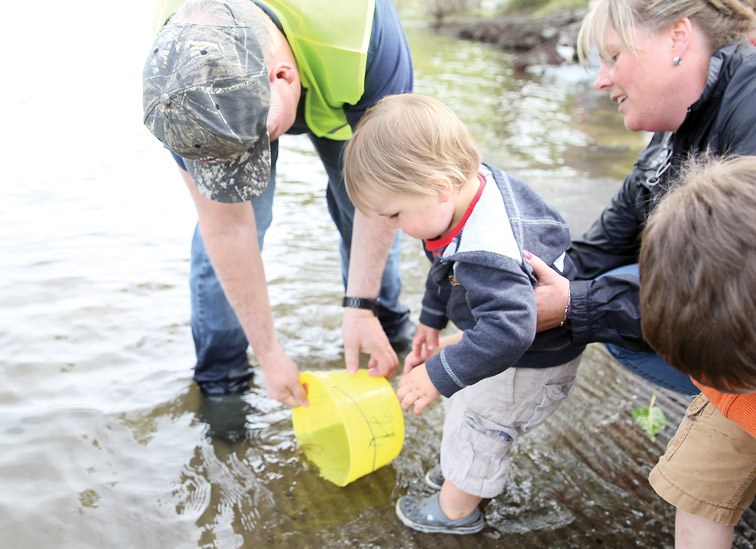The Spruce City Wildlife Association has secured $240,362 to upgrade and update its hatchery in the name of restoring the troubled chinook salmon runs along the middle and upper Fraser River.
The money comes from the federal and provincial governments through the B.C. Salmon Restoration and Innovation Fund and will be used to more-than double the hatchery's capacity to about 336,000 eggs from 144,000 and make their rearing into fry more reliable.
New troughs - at 1,500 gallons twice as large as the current ones - will be installed, along with a custom recirculation system with ultra-violet sterilization, particulate and biological filtration, a water chilling system with an aeration pump, and a backup power generator.
"All the stuff we're running in our hatchery is from 1986 so its big upgrades," said SCWA president Steve Hamilton. "It allows us to get into the modern era so to speak.
"Right now, we have to physically go down there, check water levels, temperatures - it allows us to automate that stuff."
It will also mean that if the electricity goes down at 2 a.m., SCWA volunteers won't have to race to the hatchery on River Road to restore power.
"If we've got eggs in there, if they're an hour without aerated water they're dead," Hamilton said. "The generator will kick in within 30 seconds, so it allows us to be safer, more effective, allows more capacity and just basically brings us into the modern era and on par with some of the other hatcheries."
The funding comes at a time when the chinook runs are in crisis. Even before the landslide at Big Bar north of Lillooet blocked migration of sockeye and chinook salmon swimming upstream to spawn, Hamilton said the runs were in trouble.
"They're in the gutter, absolutely in the gutter," he said.
He said just four fish were counted on the Chilako River a few years ago, in marked contrast to a run that once stood in the thousands.
"We've got 300 kilometres of the Fraser River from P.G. up to the Robson area and last year's return of springs, with chinook in there, equaled 10 fish per kilometre, so that gives you an idea of how low the numbers are," Hamilton said.
He also said a study determined the Bowron River has capacity for 55,000 fish yet recent runs have been only in the hundreds.
"It's not a habitat issue, we've got habitat," Hamilton said.
The hatchery, which is strictly volunteer run, is the only one in B.C. north of Kamloops. Hamilton believes the improvements will make a difference provided they can get enough brood stock. He said the hatchery provides a safe haven from predators as the fertilized eggs grow into fry which, in turn, are released into creeks and rivers that feed into the Fraser.
"Salmon generally have, on the high end, a four-per-cent survival rate from egg to returning...so if we can raise 10,000 more fish to the fry stage, and save that juvenile mortality, that's going to make a big difference," Hamilton said.
The Carrier Sekani Tribal Council and the Lheidli T'enneh First Nation are among the partners in the project which also includes support for fish counting efforts.
Volunteers have been busy clearing the way for the new equipment. They aim to have everything in place by the end of March 2021. The federal government is providing 70 per cent of the funding, and the provincial government is contributing the remaining 30 per cent.



